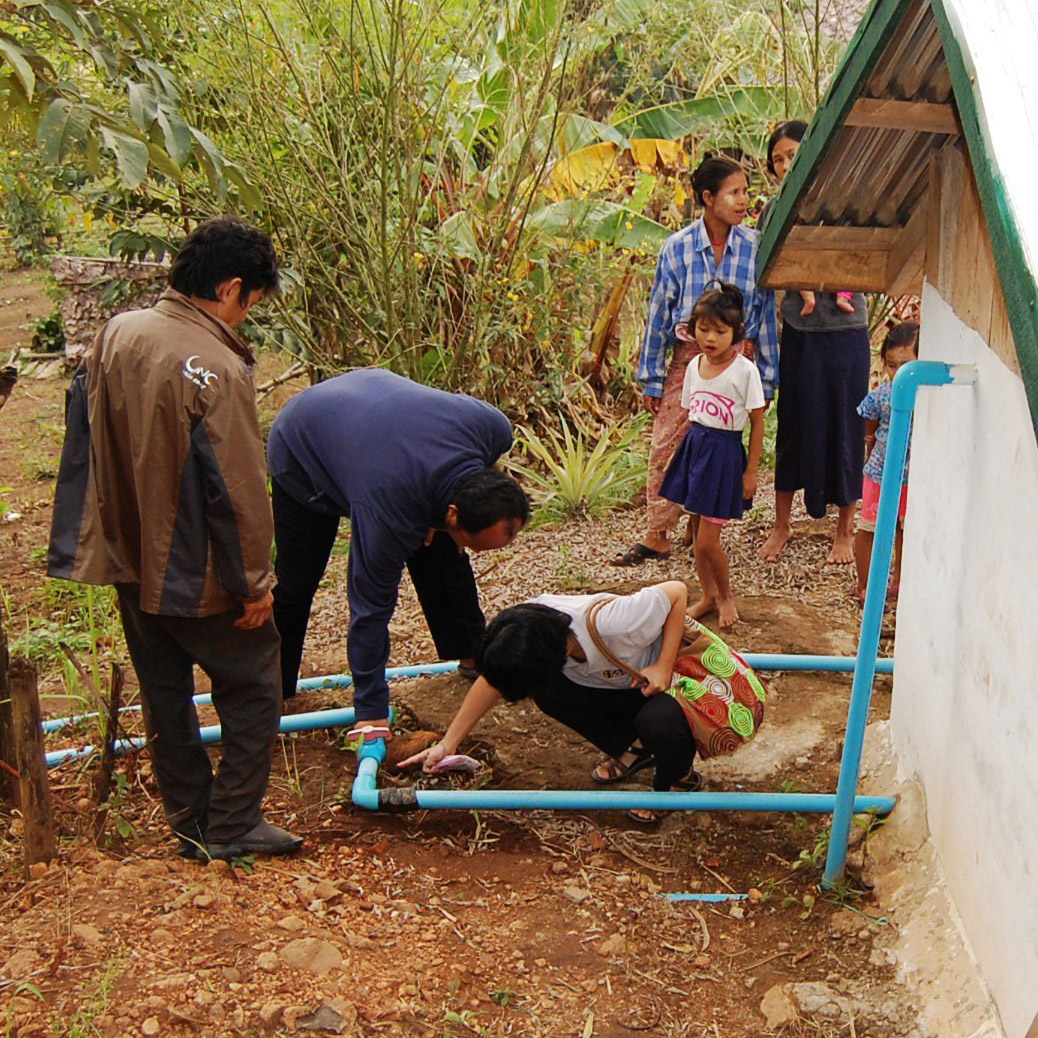Stories of Change

CWS staff and community members inspect a gravity-flow water supply system in Kayin State, Myanmar. Photo: CWS
A sustainable clean water infrastructure in Myanmar
I used to collect water for my home use in five-gallon containers at the stream that is a 30 minute walk from my house. I did this even when I was pregnant and just after I delivered my baby. It was hard, especially since that much water weighs so much (44 pounds), but no one else could do it; this was my job.
Of course I worried about contamination in the water from houses upstream and from animal waste. I knew these caused illness in my family; someone always had diarrhea.
Now, with our new water system, I connect my hose to the shared faucet that is just 22 yards away and I have safe water any time for cooking, drinking, washing clothes and bathing. I am very happy because I can save so much time and I no longer have the exhausting task of collecting water from so far away.
– Naw Thu, Hpayarthonesu sub-township, Kayin State
About the Program
During the past two years, CWS has joined with The Japan Platform to support communities to build gravity-flow water supply systems in 7 villages in far southeast Kayin State near the Thai border.
Despite awareness that refugees and internally displaced persons are expected to return to this area in significant numbers in the near future, there is almost no basic infrastructure, including no electricity or water supply. Furthermore, many other people are migrating from nearby communities to work, especially as migrant laborers in Thailand, which is accessible from the project area and where the population is growing rapidly.
To help address an essential need, this CWS-led project aims to increase access to safe water year round. Also, for sustainability the project team shares information that creates awareness and builds knowledge about the value of clean and safe water and also leads skill-building sessions so communities can maintain their water supply systems independently in the future.
So far, water that is now more readily available from the new systems is used for cooking, drinking, bathing, laundry and, for some families, growing vegetables. Having a nearby water supply is also helping children to improve their knowledge and behavior for better personal hygiene. Of particular importance is the way the project has lessened the burden of women and children’s arduous task of collecting water from distant hillside streams, a key indicator of success.
